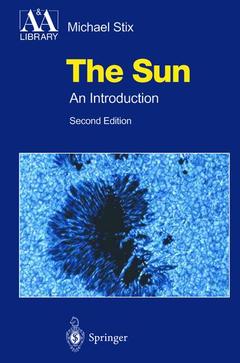Description
The Sun (2nd Ed., 2nd ed. 2002. Corr. 2nd printing 2004)
An Introduction
Astronomy and Astrophysics Library Series
Author: Stix Michael
Language: EnglishPublication date: 11-2012
492 p. · 15.5x23.5 cm · Paperback
Publication date: 01-2004
492 p. · 15.5x23.5 cm · Hardback
Description
/li>Contents
/li>Comment
/li>
A wealth of new experimental and theoretical results has been obtained in solar physics since the first edition of this textbook appeared in 1989. Thus all nine chapters have been thoroughly revised, and about 100 pages and many new illustrations have been added to the text. The additions include element diffusion in the solar interior, the recent neutrino experiments, methods of image restoration, observational devices used for spectroscopy and polarimetry, and new developments in helioseismology and numerical simulation. The book takes particular advantage of the results of several recent space missions, which lead to substantial progress in our understanding of the Sun, from the deep interior to the corona and solar wind.





